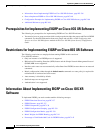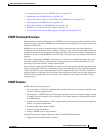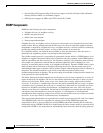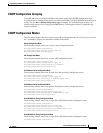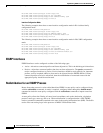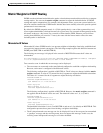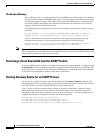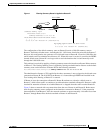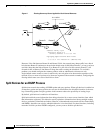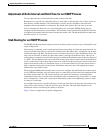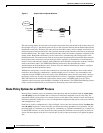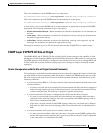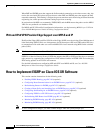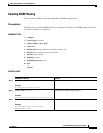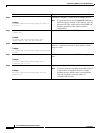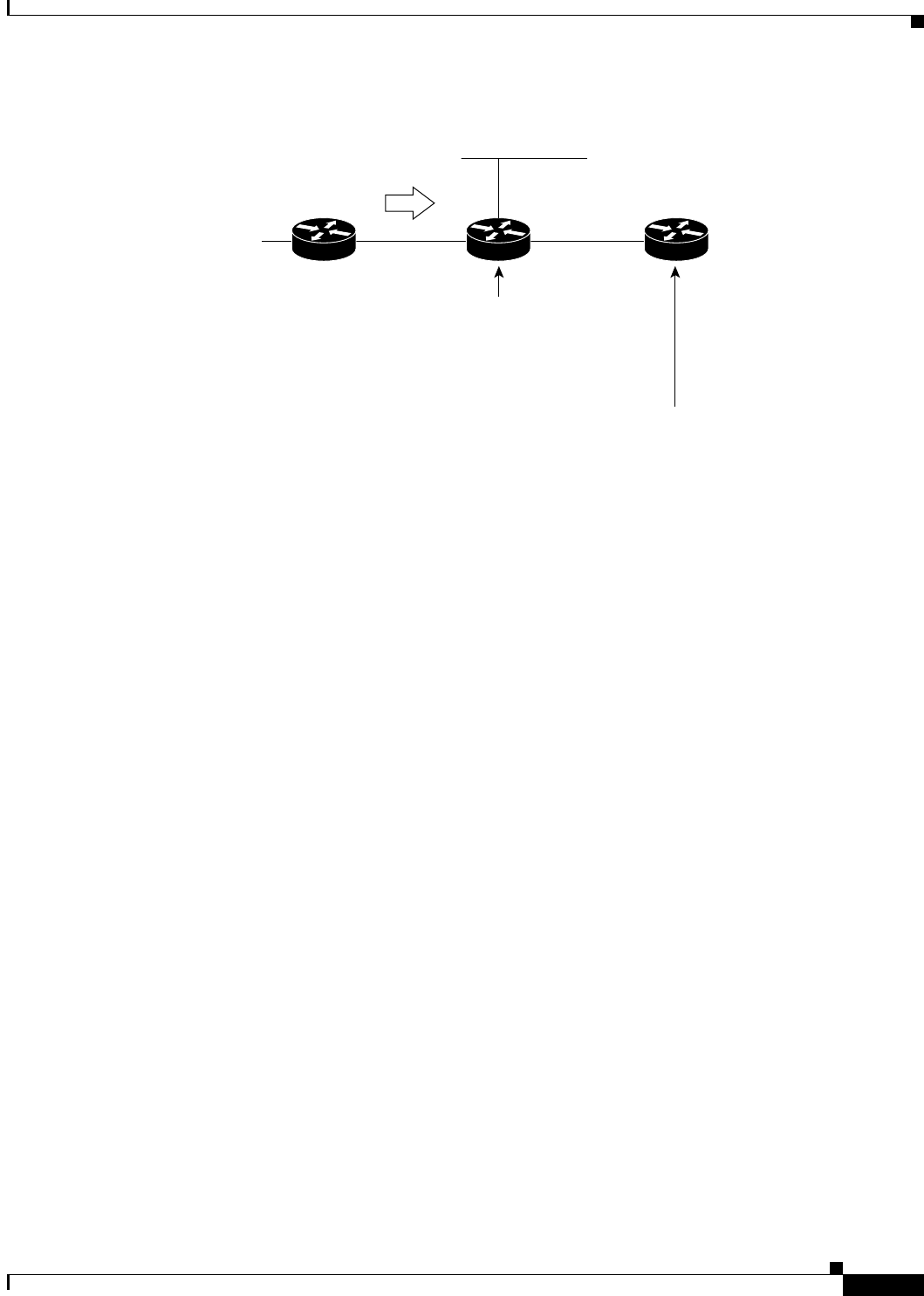
Implementing EIGRP on Cisco IOS XR Software
Information About Implementing EIGRP on Cisco IOS XR Software
RC-143
Cisco IOS XR Routing Configuration Guide
OL-14356-01
Figure 1 Floating Summary Route Is Applied to Router-B
The configuration of the default summary route on Router-B sends a 0.0.0.0/0 summary route to
Router-C and blocks all other routes, including the 10.1.1.0/24 route, from being advertised to Router-C.
However, this configuration also generates a local discard route on Router-B, a route for 0.0.0.0/0 to the
null 0 interface with an administrative distance of 5. When this route is created, it overrides the EIGRP
learned default route. Router-B is no longer able to reach destinations that it would normally reach
through the 0.0.0.0.0/0 route.
This problem is resolved by applying a floating summary route to the interface on Router-B that connects
to Router-C. The floating summary route is applied by relating an administrative distance to the default
summary route on the interface of Router-B with the following statement:
RP/0/RP0/CPU0:router(config-if)# summary-address 100 0.0.0.0 0.0.0.0 250
The administrative distance of 250, applied in the above statement, is now assigned to the discard route
generated on Router-B. The 0.0.0.0/0, from Router-A, is learned through EIGRP and installed in the
local routing table. Routing to Router-C is restored.
If Router-A loses the connection to Router-B, Router-B continues to advertise a default route to
Router-C, which allows traffic to continue to reach destinations attached to Router-B. However, traffic
destined for networks to Router-A or behind Router-A is dropped when the traffic reaches Router-B.
Figure 2 shows a network with two connections from the core: Router-A and Router-D. Both routers
have floating summary routes configured on the interfaces connected to Router-C. If the connection
between Router-E and Router-C fails, the network continues to operate normally. All traffic flows from
Router-C through Router-B to the hosts attached to Router-A and Router-D.
150000
address-family ipv4
interface POS0/3/0/0
summary-address 0.0.0.0/0 25
RP/0/RP0/CPU0:router-B# show route
. . . .
. . . .
0.0.0.0/0 via <Router-A> (489765/170)
Router-C
Router-A Router-B
0.0.0.0/0
10.1.1.0/24
RP/0/RP0/CPU0:router-C# show route
0.0.0.0/0 via <Router-B> (489765/90)




